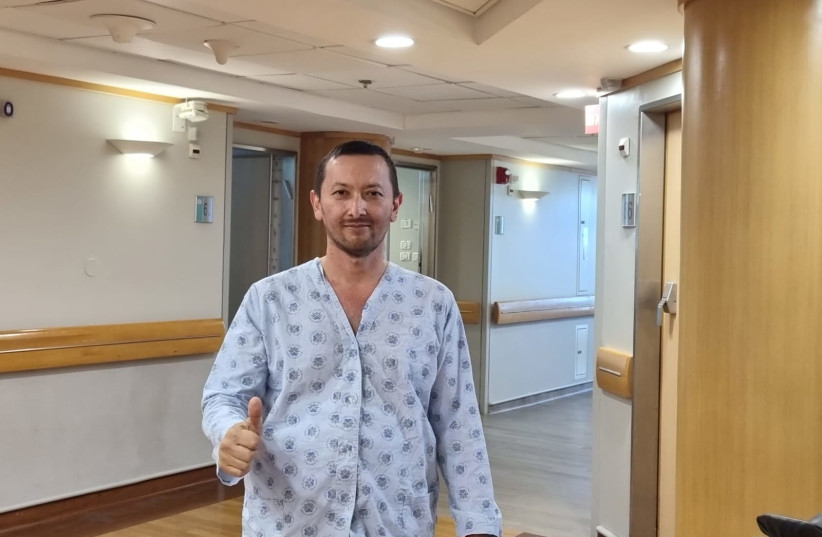Sourasky surgeons performed the transplant of a replacement liver that had been disqualified from being donated to others for the first time this week.
Hagai Vyacheslav, a 45-year-old divorced father of two small children, thought he was doomed. He started suffering from severe stomach pains two years ago, and because of that, he reached the point where he couldn’t eat.
For months, no doctor was able to diagnose the cause of the pain then he began to lose a lot of weight – 13 kilos in only one month. Finally, after many months, he went to the emergency medicine department at Tel Aviv Sourasky Medical Center, and after a series of tests, it was discovered that he had colon cancer with metastases to the liver. His days were numbered.
He immediately started receiving aggressive chemotherapy treatments in the oncology unit. “It was exhausting and very difficult. I felt that it drained everything from me, and it was especially difficult for me to explain to my two children what I was going through. They would look at me and expect me to be a strong father. I tried as much as I could to be like that for them during this period,” he recalled.
After a year of chemotherapy treatments, the doctors managed to remove the tumor from the large intestine but due to scarring from the many chemotherapy treatments he received, it was not possible to operate on his liver, so he had to continue undergoing chemotherapy that over time ceased to help him.

“It was clear that I needed a new liver, but no transplant center in Israel was willing to put me on the waiting list. I was not told this explicitly, but I understood that there was a preference to give a new liver to a non-oncology patient due to the suspicion that the disease might return and then they would have ‘wasted’ the liver on me instead of giving it to someone with a better chance of survival. I looked in the family for a compatible live donor for me, but we didn’t find anyone who was suitable. My situation was already really bad, and I started thinking about the worst,” Vyacheslav said.
How did Vyacheslav get a liver?
Prof. Nir Lubetzky, director of the liver, pancreas and transplant surgery department at the hospital, realized that Vyacheslav would not live much longer and made an extraordinary decision. He received a message about an available liver that was rejected for donation after being rejected by all the Israeli transplant centers and asked to receive it for him. He realized that thanks to a unique technology available only at Sourasky, it would be possible to improve the functioning of the liver to the extent that it would be suitable for transplantation and save Vyacheslav’s life.
The new technology is a heavy-duty casting machine – a unique and groundbreaking device that came into use this year at Sourasky along with only a few transplant centers in the world. The machine is connected in the operating room before the transplant to the donated liver and sends a special solution and oxygen to it. As a result of this, there is an improvement in the function of the liver tissue and with it the chance that the liver will be absorbed better in the patient.
“Thanks to the device, we were able to accept for the first time in Israel a donation of a so-called ‘borderline’ liver from donors who suffered from various diseases or who are old."
Prof. Nir Lubetzky
“Thanks to the device, we were able to accept for the first time in Israel a donation of a so-called ‘borderline’ liver from donors who suffered from various diseases or who are old. The technology performs a sort of ‘resuscitation’ for the organ and significantly improves its condition,” said Lubetzky.
“I still can’t believe that I managed to recover – that I have a healthy liver in my body. Finally, I can look to the future and dream of what I’m going to do in the coming years. I have no words to thank Prof. Nir Lubetzky and the entire amazing Sourasky team – the anesthesia and intensive care staff, the transplant surgeons, the pathologists and the liver unit, the oncology department and the medical technologist who operated the perfusion machine,” said Vyacheslav. Thanks to all of you I am here healthy and happy!”
